Associated with the Nabis and nicknamed the "Nabi Zouave" by his fellow artists, Édouard Vuillard was the creator of subtle interior and landscape paintings.
Blending decorative motifs, delicate brushstrokes and nuanced colors, Vuillard was able to create atmospheres that were both contemplative and subdued.
In this article, discover 5 things to know about Édouard Vuillard.

1 - He grew up in a family composed almost exclusively of women
Jean Édouard Vuillard was born on November 12, 1869 in Cuiseaux. Vuillard grew up in Paris and attended the Lycée Condorcet where he met Maurice Denis, Ker-Xavier Roussel, Paul Sérusier, Pierre Vever and Pierre Hermant.
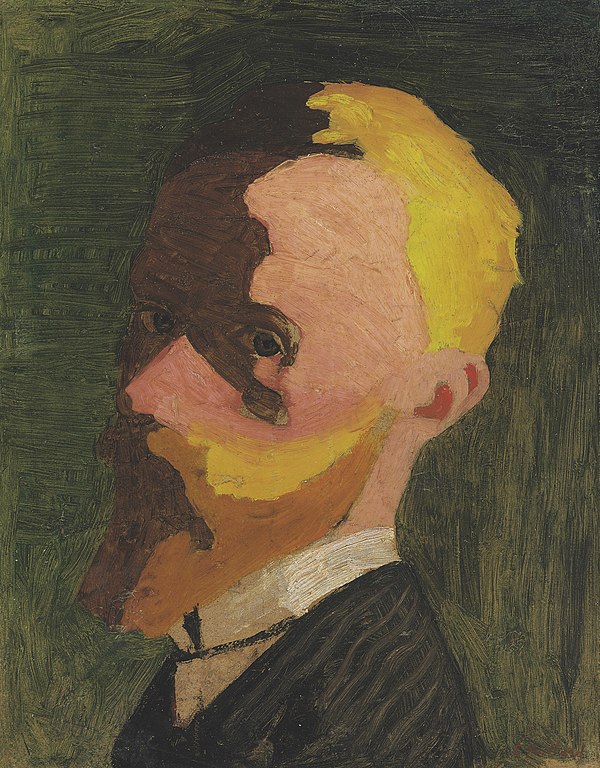
Self-portrait, Édouard Vuillard, 1890
His father died when he was only 20 years old, the young Édouard was very inspired by the women in his family: his older sister, his mother and his grandmother. A very rare thing, the painter lived with his mother until the age of sixty.
2 - Before joining the Nabi group, Édouard Vuillard received a solid education
In 1885, he left the Lycée Condorcet to join his best friend, Ker-Xavier Roussel, who was studying in the workshop of the painter Diogène Maillart, former winner of the Prix de Rome in 1864. At the same time, he regularly visited the Louvre Museum and decided to devote himself to his artistic career.
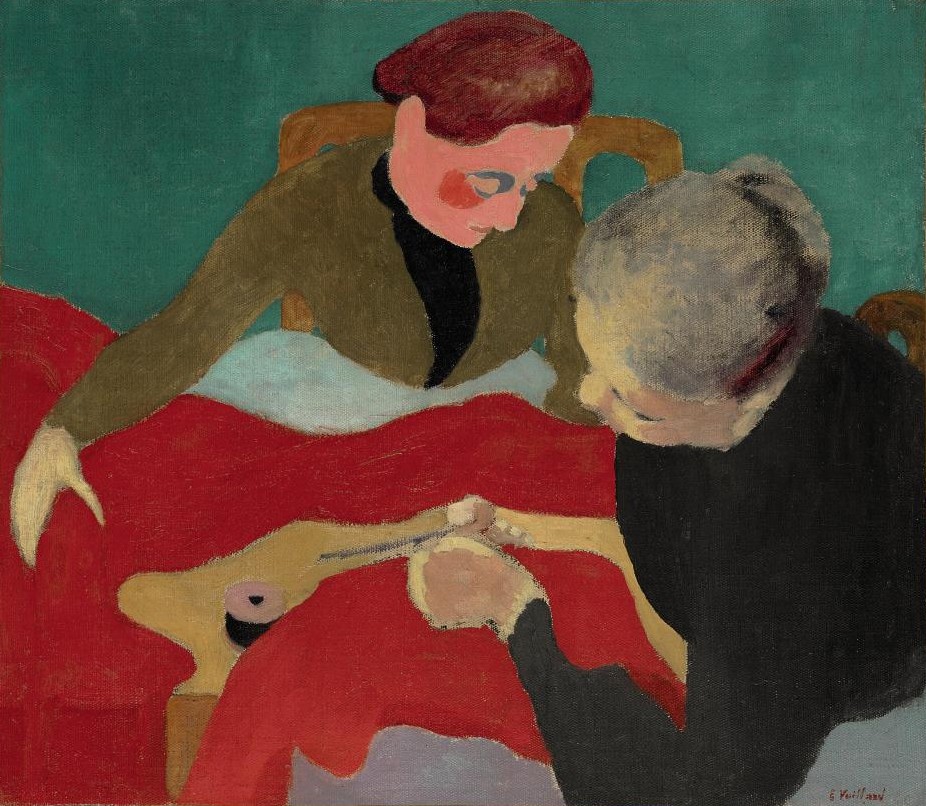
The seamstresses, Édouard Vuillard, 1890
In 1886, Vuillard attended the Académie Julian with Tony Robert-Fleury as his principal teacher. The following year, he was admitted to the École des Beaux-Arts in Paris with Jean-Léon Gérôme as his teacher.
During his training, which can be described as academic, the main subjects he treated were still life, portraiture and nudes.
Read also: 5 things to know about Edgar Degas
3 - He is one of the founding members of the Nabi movement
In 1889, Maurice Denis convinced him to join a small dissident group of the Julian Academy that produced works imbued with spirituality and symbolism, the brotherhood of the Nabis.
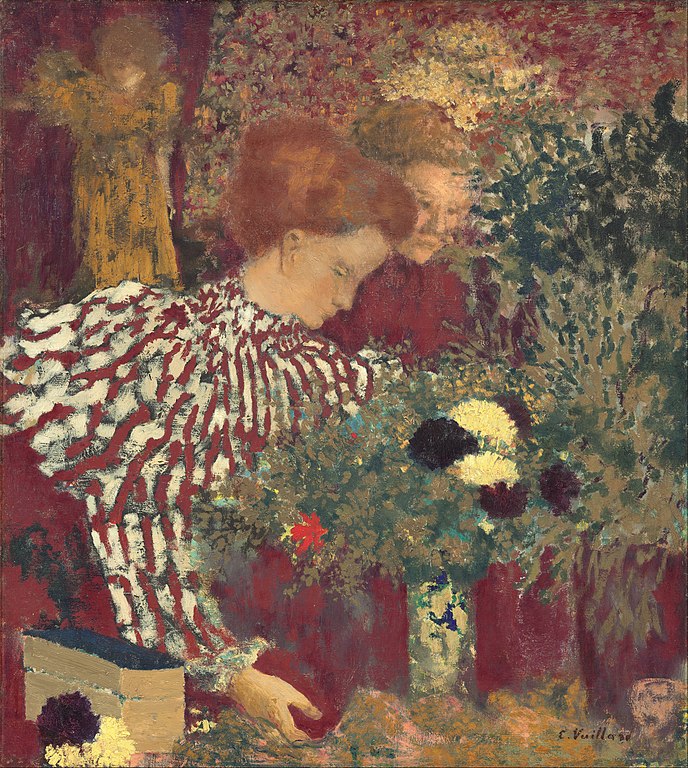
Woman in a Striped Dress, Édouard Vuillard, 1895
Paul Sérusier, who is the author of the famous painting The Talisman, developed a real passion for the synthesist method, which relies on imagination and memory rather than on direct observation of a subject.
Vuillard was initially opposed to this method but eventually tried it out and even adhered to this pictorial approach around 1890.
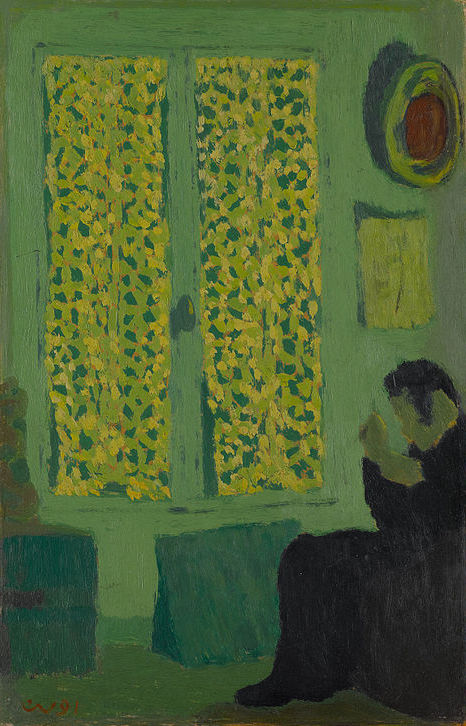
The Green Interior, Édouard Vuillard, 1891
Between 1889 and 1903, La Revue blanche showed its support for the Nabis painters, and numerous texts, in prose, in the form of textual fragments were published in this journal. These fragments respond to the precepts of the Nabis and the engravings that these painters created to illustrate the magazine.
"I don't make portraits, I paint people in their homes." Édouard Vuillard
4 - Vuillard: painter but also engraver
Édouard Vuillard began creating black lithographs in 1893.
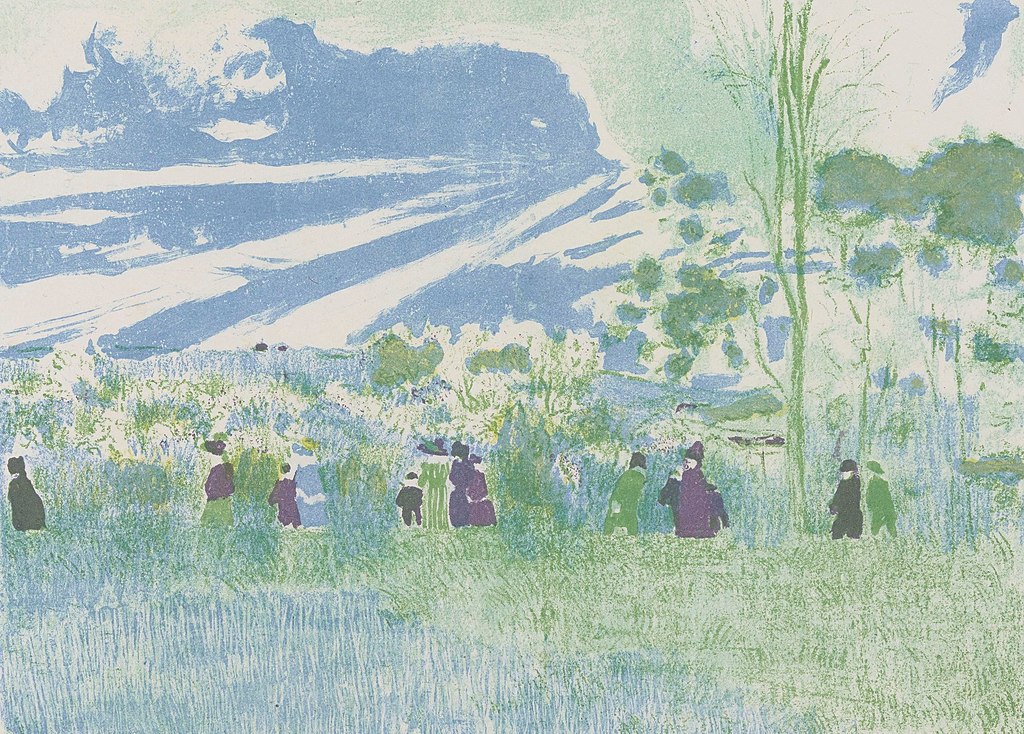
Landscapes and Interiors: Across the Fields, Édouard Vuillard, 1899
In 1899, he began creating color lithographs, with a portfolio of 13 lithographs entitled Paysages et intérieurs published by one of France's most important art dealers Ambroise Vollard.
Towards the end of his life, Vuillard also began production of several etchings.
Read also: 13 things to know about Paul Cézanne
5 - He was a talented decorator
Edouard Vuillard can be defined as a versatile artist, having also taken on important commissions to decorate apartments, villas and private mansions in Paris and elsewhere.
Vuillard's mural compositions are exceptional and the Nabi artist Jan Verkade could testify to the enthusiasm shared by the artists of the movement for decorative panels and mural painting in general: "No more easel paintings! Down with useless furniture! Painting must not usurp a freedom that isolates it from other arts. The painter's work begins when the architect considers his own finished."
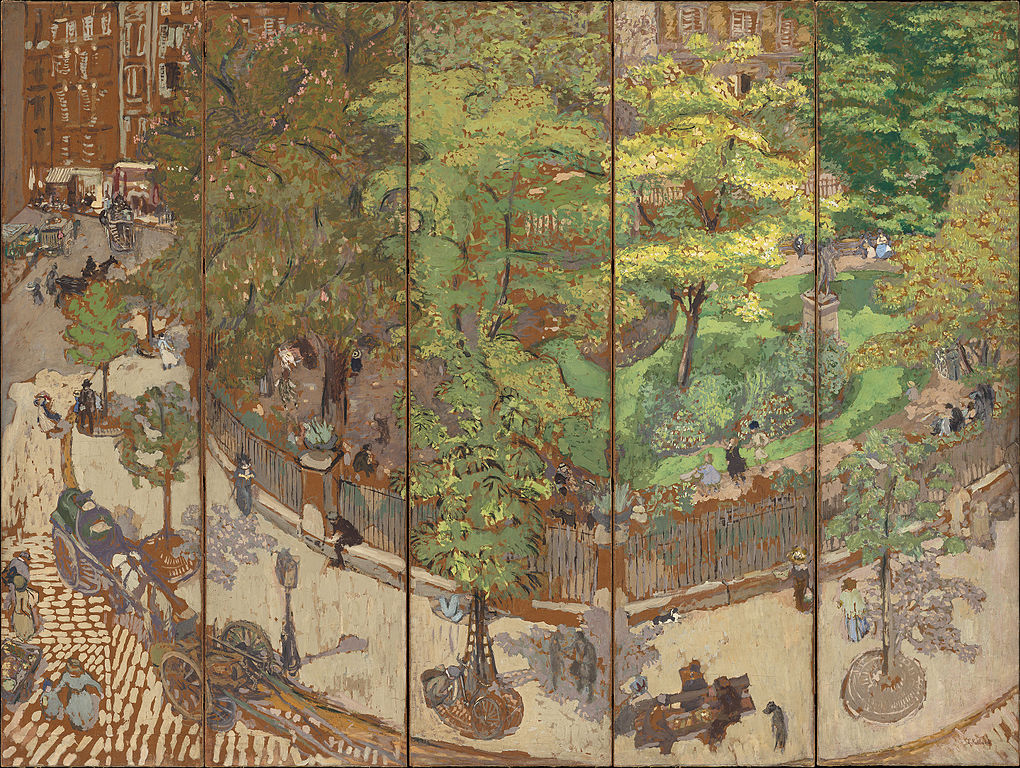
Place Vintimille, Édouard Vuillard, 1911
Note also that Vuillard was very involved in the world of theater, he is the author of magnificent theater sets.
"Édouard Vuillard was prestigious for his economic inventiveness, his ingenuity in creating the stage decoration and the atmosphere? The set of the second act gave distinction and intimacy to our play." Aurélien Lugné-Poe




